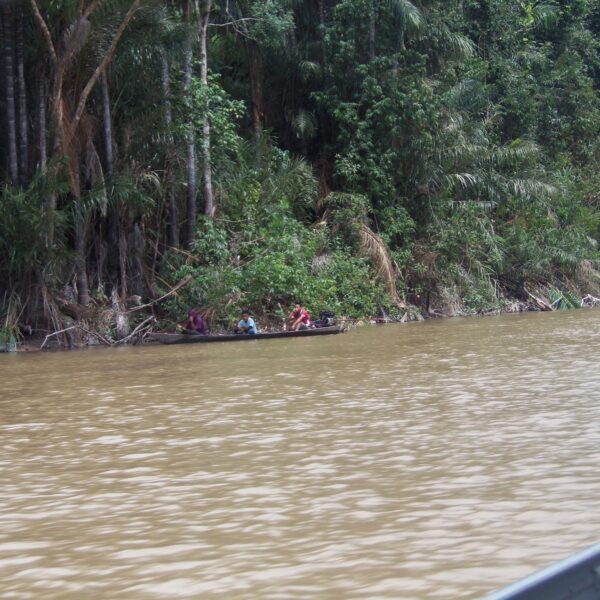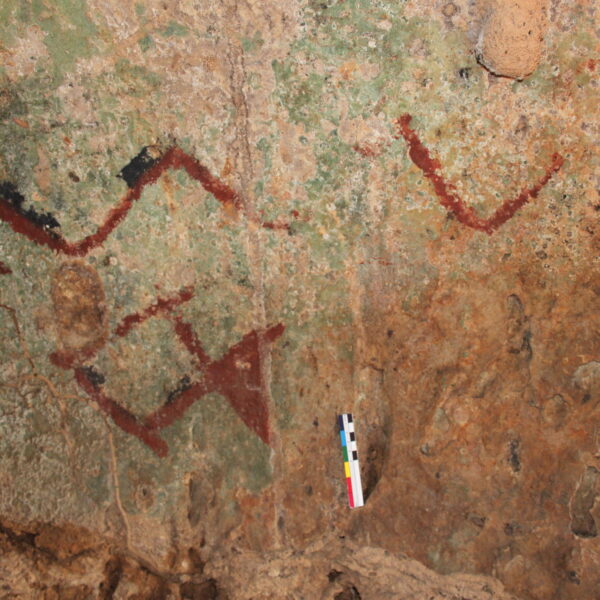The Serrania La Lindosa: New archaeological sites for the colonisation and settlements of the Colombian Amazon
As groups of hunter-gatherers encountered the last of the major continents, they were confronted not only by the enormity of the Amazon Rainforest but also its environmental diversity. Today, researchers continue to be perplexed by the arrival of humans in the Amazon basin. This is due in part because of the inhospitable image created in the West of its harsh environmental conditions. Despite this Western imaginary, it cannot be denied that the colonisation and the adaptation to Amazonian habitats was one of the greatest challenges that human groups had to face in their expansion across the South American subcontinent. This project focuses on how the first human groups that entered the Amazon had the ability adapt to the diversity of environments and the climatic changes that occurred during the end of the Pleistocene and the transition to the early Holocene, about 13,000-8,000 years ago.
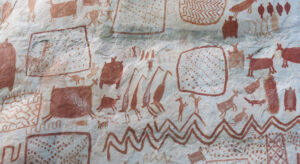
La Lindosa. Cerro azul rock art panel, photo by Francisco Javier Aceituno Bocanegra.
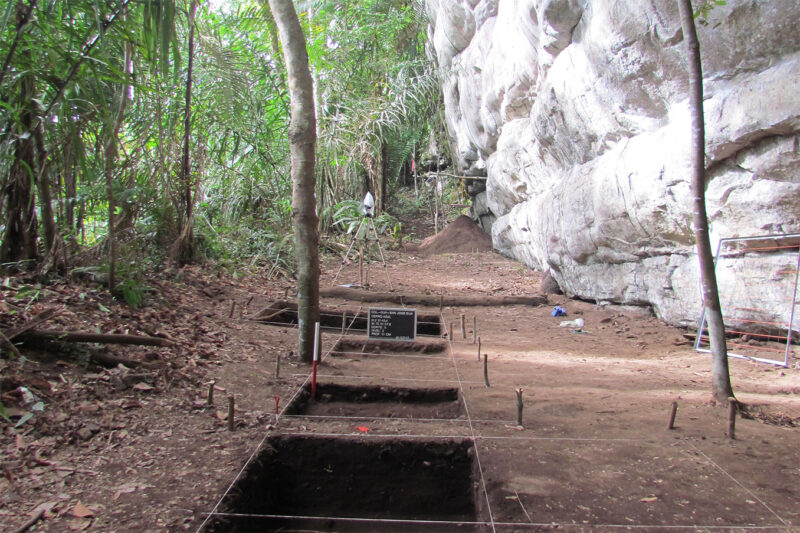
Cerro azul excavation trenches, photo by Francisco Javier Aceituno Bocanegra
According to the archaeological record, the first occupations of the Amazon took place between 13,000 and 11,000 years ago. This evidence stems from the Piedra Pintada Cave, located in the lower Amazon basin in the north of Brazil, that dates to between 11,280 and 10,170 years ago. The cave remains consist mainly of non-Clovis tradition arrowheads that are associated in the archaeological record with palm remains, fruit trees, fish, rodents, and turtles. These results confirm that the Paleoindians who occupied Piedra Pintada lived in a tropical rainforest, a similar climate to that which exists today. Thousands of kilometres from the Piedra Pintada cave, recent studies have focused on several archaeological sites in the Serranía La Lindosa, which is located in the Northwestern Colombian Amazon, and have human occupations dating as early as 13,000 years ago. These new dates from Serranía La Lindosa are key for studying the settlements in this region, which, due to its geographical position, can be considered a natural point of contact with the Andean mountain range. Therefore, this site could have been a potential transit route between the highlands and lowlands. It is important to add that the dates obtained in at these sites are currently the oldest in the upper Amazon basin.
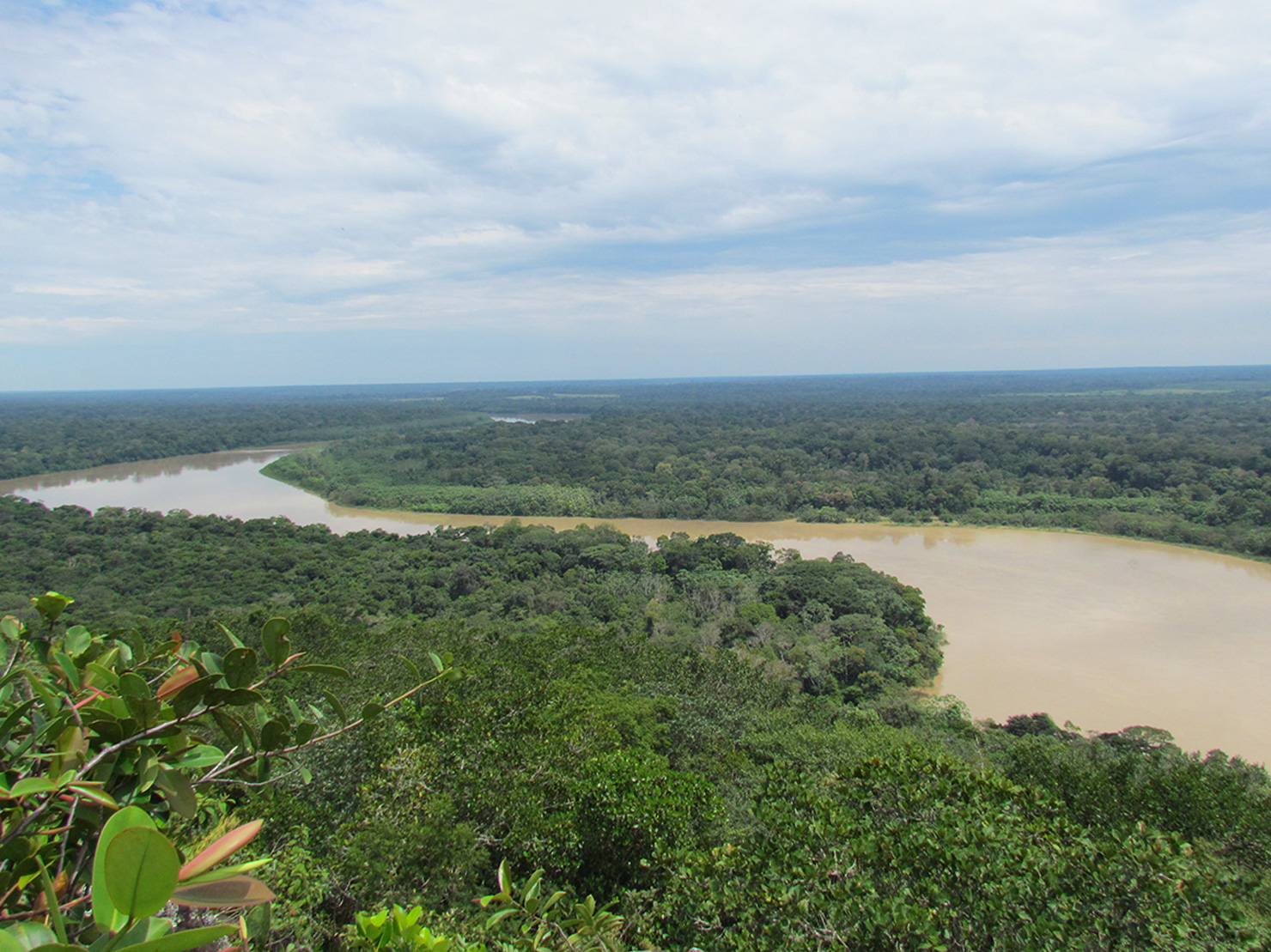
Serranía La Lindosa is located on the riverbank of the Guayabero River, between the Meta and Guaviare Departments, which is the current territory of the Republic of Colombia. On a geographical scale, the Guaviare River marks the natural transition between the Amazon and the Orinoco regions, acting as a transitional ecotone between two large areas with a high diversity of natural habitats.
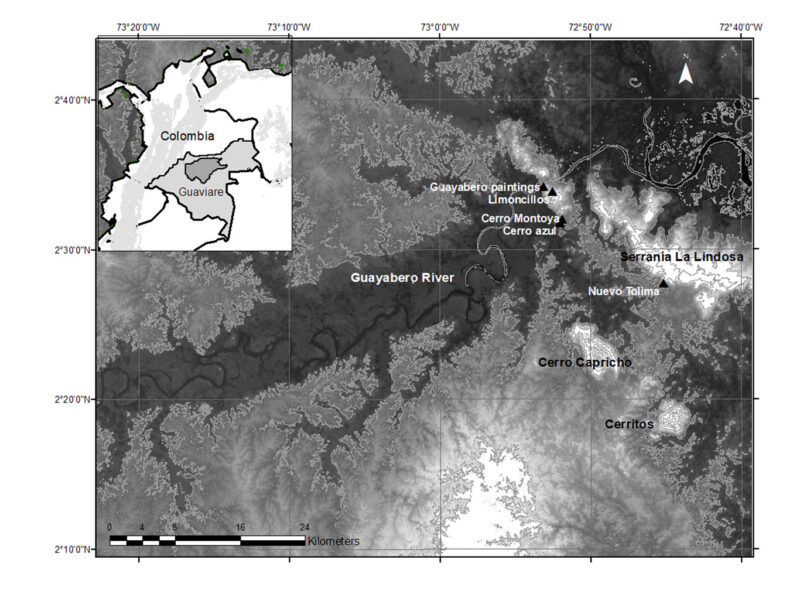
In 2014 and 2015 Professor Morcote (National University of Colombia) surveyed and excavated the Cerro Azul rock shelter, gathering evidence of occupation 12,200 years ago. At the time, it was the oldest date registered in the Colombian Amazon. The Cerro Azul excavation was expanded in 2017 and 2018. New grids were excavated at the Angosturas II site, which was originally excavated in 1989. In addition, a survey was carried out in the Serranía La Lindosa that was aimed at locating new rock shelters. These surveys had very promising results. Small excavations (1×1 metre) were carried out in two new sites (Limoncillos and Cerro Montoya). These yielded dates from the end of the Pleistocene, which corroborates the hypothesis of an Amazon basin colonisation at the end of the Ice Age. The data obtained so far, collected in just 3 years of work, demonstrates the exceptional nature of the Serranía La Lindosa to study the population of the Colombian Amazon, which will help inform studies in the entirety of the Amazon Rainforest and throughout the Americas. In addition to these archaeological sites, the area is saturated by thousands of cave paintings distributed along the rock shelters that typically characterise the Serranía La Lindosa. This unique record encapsulates information of the natural and symbolic world of earlier inhabitants of the Amazon, and will contribute greatly to our understanding of past human populations.
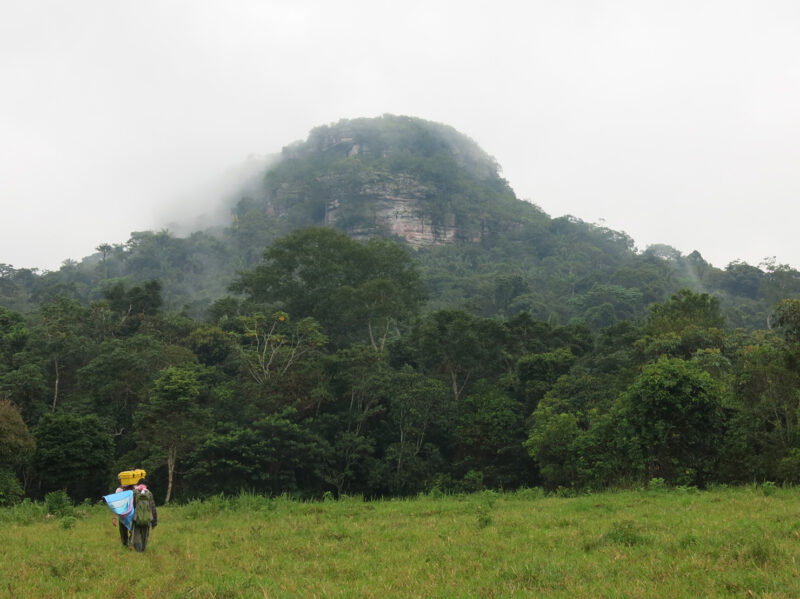
Cerro Azul Serrania la Lindosa, photo by Francisco Javier Aceituno Bocanegra
This project began in 2018 in collaboration with the University of Antioquia, the National University of Colombia and the University of Exeter and it aims to analyse the cultural and environmental conditions of the Serranía La Lindosa settlement. Also, we aim to investigate long-term scale adaptations and environmental management of the human groups that populated this region as well as how these human groups built their territory thousands of years ago. This information will be gleaned from traditional archaeological work, but also from the exceptional artistic representations that speak to the social, symbolic, and probably also religious thought that anchored their history to the territory of the Serranía La Lindosa.
Currently, this project will resume under the coordination of professors from Exeter University José Iriarte (main coordinator) and Mark Robinson and under the framework of a Horizon 2020 project funded by the European Union. The goal is to tell the story of early people of the Northwestern boundary of the Amazon basin. The project is being co-coordinated with partners in Colombia including the professors Gaspar Morcote of the National University of Colombia and Francisco Javier Aceituno of the University of Antioquia.
